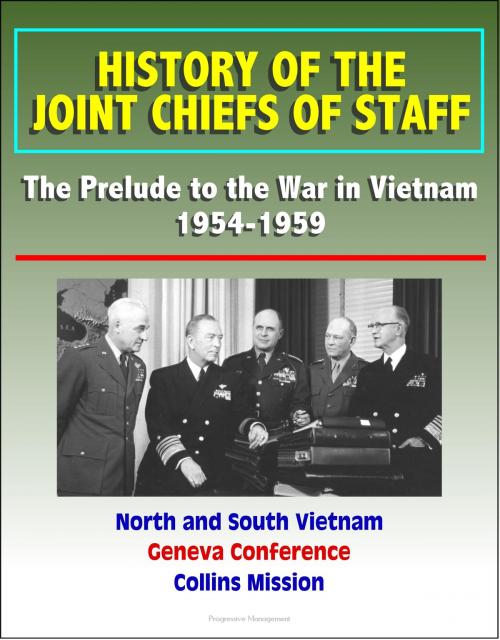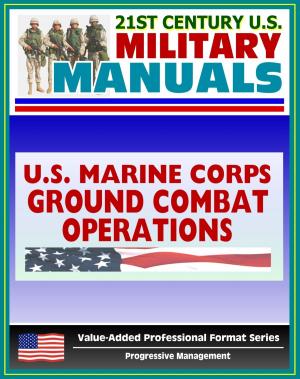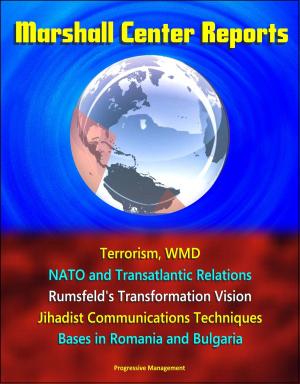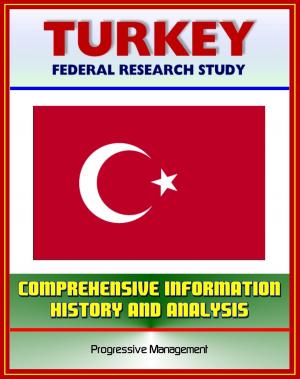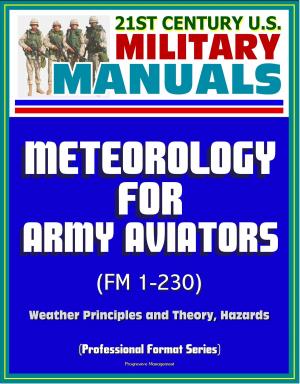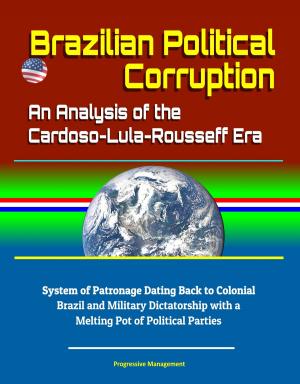History of the Joint Chiefs of Staff: The Prelude to the War in Vietnam 1954-1959 - North and South Vietnam, Geneva Conference, Collins Mission
Nonfiction, History, Military, Vietnam War, Asian| Author: | Progressive Management | ISBN: | 9781301490349 |
| Publisher: | Progressive Management | Publication: | September 29, 2013 |
| Imprint: | Smashwords Edition | Language: | English |
| Author: | Progressive Management |
| ISBN: | 9781301490349 |
| Publisher: | Progressive Management |
| Publication: | September 29, 2013 |
| Imprint: | Smashwords Edition |
| Language: | English |
The Historical Division, Joint Chiefs of Staff, the predecessor of the present Joint History Office, produced the manuscript "The Joint Chiefs of Staff and the War in Vietnam, 1954-1959," in 1972 as a Top Secret document. Based largely upon then classified State Department and Defense department records, the History consists of eight chronological chapters and an Appendix describing the formation and functioning of the Southeast Asia Treaty Organization (SEATO). The chronological chapters cover the growing relationship of the United States after the Geneva Treaty of 1954 with the new Republic of Vietnam (South Vietnam) under President Ngo Dinh Diem; Diem's defeat of the various independent sects and his dominance over the South Vietnamese military; the awkward relationship between the US mission and the remaining French units in Vietnam; the continuing hostility between the two Vietnams; and the beginning of the "Viet Cong" insurrection in the later years of the study.
-
The Geneva Conference and Its Aftermath—1954 * 2. Three Troubled Months—August-October 1954 * 3. The Collins Mission * 4. The Crisis of April and May 1955 * 5. The Outlook Brightens in South Vietnam * 6. Developments in North Vietnam * 7. The Republic of Vietnam: 1956, A Year of Progress * 8. South Vietnam, 1957-1959
-
The Geneva Conference and Its Aftermath—1954 * The Geneva Background * The Situation in Vietnam * Reassessment of US Policy * NSC 5429 * The Views of the Joint Chiefs of Staff * NSC 5429/1 and NSC 5429/2 * The Manila Conference * Restudy of US Policy toward the Far East (NSC 5429/3) * 2. Three Troubled Months—August-October 1954 * Political Turmoil * The Washington Conference * South Vietnam: Continuing Political Deadlock * French Policy * The Question of Independence * The Situation in North Vietnam * 3. The Collins Mission * The Seven-Point Program * The Problem of Creating an Effective VNA * Economic Problems * Strengthening and Broadening the Diem Government * A Provisional National Assembly * The Question of Diem's Replacement * Review of US Policy * 4. The Crisis of April and May 1955 * The Sect Problem * The "United Front of Nationalist Forces" * Fighting in Cholon, 29-30 March * The Recommendations of Generals Collins and Ely * The Binh Xuyen Insurrection * Trilateral Talks in Paris * 5. The Outlook Brightens in South Vietnam * Diem's Refusal to Consult * Franco-Vietnamese Relations * The Campaign against the Sects * Organizing for Pacification * Diem's Political Program * The Training Relations Instruction Mission (TRIM) * Revision of Vietnamese Force Levels * MAAG's Personnel Problems * The Security Threat * 6. Developments in North Vietnam * Evacuation of Refugees * Evacuation of MDAP Equipment * French Industry Leaves Tonkin * Reconstruction and Expansion of the Agricultural Economy * Reconstruction and Expansion of the Industrial Economy * Agriculture and Industry: The Three Year Plan and After * The DRV Government * The Opposition * DRV Foreign Policy, 1954-1960 * 7. The Republic of Vietnam: 1956, A Year of Progress * Elections and a New Constitution * The Succession Controversy * US Aid to RVN * The Security Threat * RVN Forces * Regular Forces * Temporary Equipment Recovery Mission * VNAF and VNN * Increase in MAAG Personnel * Paramilitary Forces: The Civil Guard * Paramilitary Forces: The Self Defense Corps * Development of a New Policy Statement * 8. South Vietnam, 1957-1959 * Economic Developments and Agrarian Reforms * The GVN Defense Establishment * The RVNAF * The ARVN * The VNAF * The VNN * Assessment of RVNAF * Diem's Attempt at Political Unity * The Insurgency in Vietnam, 1957-1959 * Appendix: The Evolution of the Southeast Asia Treaty Organization * A Military Concept for Southeast Asia * The International Working Group * The Bangkok Conference: 23-25 February 1955 * The Bandung Conference: 18-24 April 1955 * Setting Up Machinery
The Historical Division, Joint Chiefs of Staff, the predecessor of the present Joint History Office, produced the manuscript "The Joint Chiefs of Staff and the War in Vietnam, 1954-1959," in 1972 as a Top Secret document. Based largely upon then classified State Department and Defense department records, the History consists of eight chronological chapters and an Appendix describing the formation and functioning of the Southeast Asia Treaty Organization (SEATO). The chronological chapters cover the growing relationship of the United States after the Geneva Treaty of 1954 with the new Republic of Vietnam (South Vietnam) under President Ngo Dinh Diem; Diem's defeat of the various independent sects and his dominance over the South Vietnamese military; the awkward relationship between the US mission and the remaining French units in Vietnam; the continuing hostility between the two Vietnams; and the beginning of the "Viet Cong" insurrection in the later years of the study.
-
The Geneva Conference and Its Aftermath—1954 * 2. Three Troubled Months—August-October 1954 * 3. The Collins Mission * 4. The Crisis of April and May 1955 * 5. The Outlook Brightens in South Vietnam * 6. Developments in North Vietnam * 7. The Republic of Vietnam: 1956, A Year of Progress * 8. South Vietnam, 1957-1959
-
The Geneva Conference and Its Aftermath—1954 * The Geneva Background * The Situation in Vietnam * Reassessment of US Policy * NSC 5429 * The Views of the Joint Chiefs of Staff * NSC 5429/1 and NSC 5429/2 * The Manila Conference * Restudy of US Policy toward the Far East (NSC 5429/3) * 2. Three Troubled Months—August-October 1954 * Political Turmoil * The Washington Conference * South Vietnam: Continuing Political Deadlock * French Policy * The Question of Independence * The Situation in North Vietnam * 3. The Collins Mission * The Seven-Point Program * The Problem of Creating an Effective VNA * Economic Problems * Strengthening and Broadening the Diem Government * A Provisional National Assembly * The Question of Diem's Replacement * Review of US Policy * 4. The Crisis of April and May 1955 * The Sect Problem * The "United Front of Nationalist Forces" * Fighting in Cholon, 29-30 March * The Recommendations of Generals Collins and Ely * The Binh Xuyen Insurrection * Trilateral Talks in Paris * 5. The Outlook Brightens in South Vietnam * Diem's Refusal to Consult * Franco-Vietnamese Relations * The Campaign against the Sects * Organizing for Pacification * Diem's Political Program * The Training Relations Instruction Mission (TRIM) * Revision of Vietnamese Force Levels * MAAG's Personnel Problems * The Security Threat * 6. Developments in North Vietnam * Evacuation of Refugees * Evacuation of MDAP Equipment * French Industry Leaves Tonkin * Reconstruction and Expansion of the Agricultural Economy * Reconstruction and Expansion of the Industrial Economy * Agriculture and Industry: The Three Year Plan and After * The DRV Government * The Opposition * DRV Foreign Policy, 1954-1960 * 7. The Republic of Vietnam: 1956, A Year of Progress * Elections and a New Constitution * The Succession Controversy * US Aid to RVN * The Security Threat * RVN Forces * Regular Forces * Temporary Equipment Recovery Mission * VNAF and VNN * Increase in MAAG Personnel * Paramilitary Forces: The Civil Guard * Paramilitary Forces: The Self Defense Corps * Development of a New Policy Statement * 8. South Vietnam, 1957-1959 * Economic Developments and Agrarian Reforms * The GVN Defense Establishment * The RVNAF * The ARVN * The VNAF * The VNN * Assessment of RVNAF * Diem's Attempt at Political Unity * The Insurgency in Vietnam, 1957-1959 * Appendix: The Evolution of the Southeast Asia Treaty Organization * A Military Concept for Southeast Asia * The International Working Group * The Bangkok Conference: 23-25 February 1955 * The Bandung Conference: 18-24 April 1955 * Setting Up Machinery
